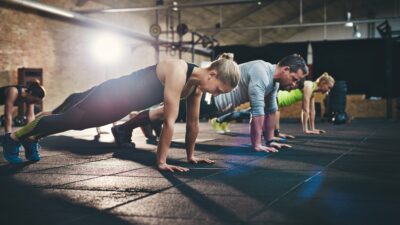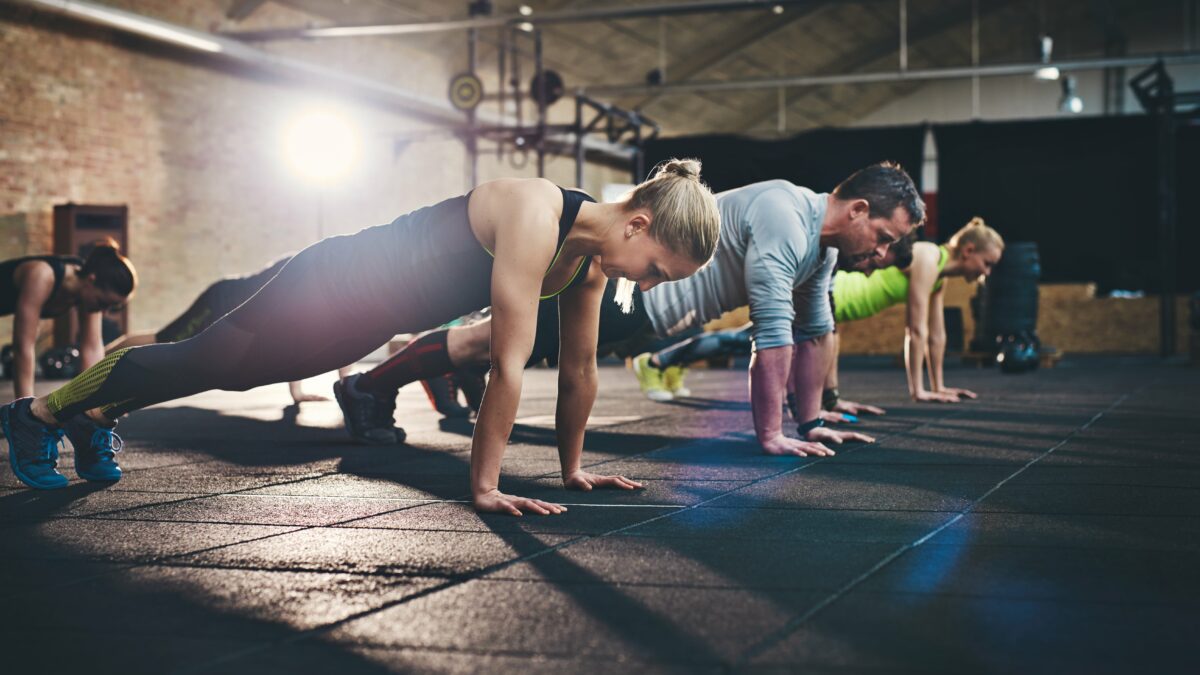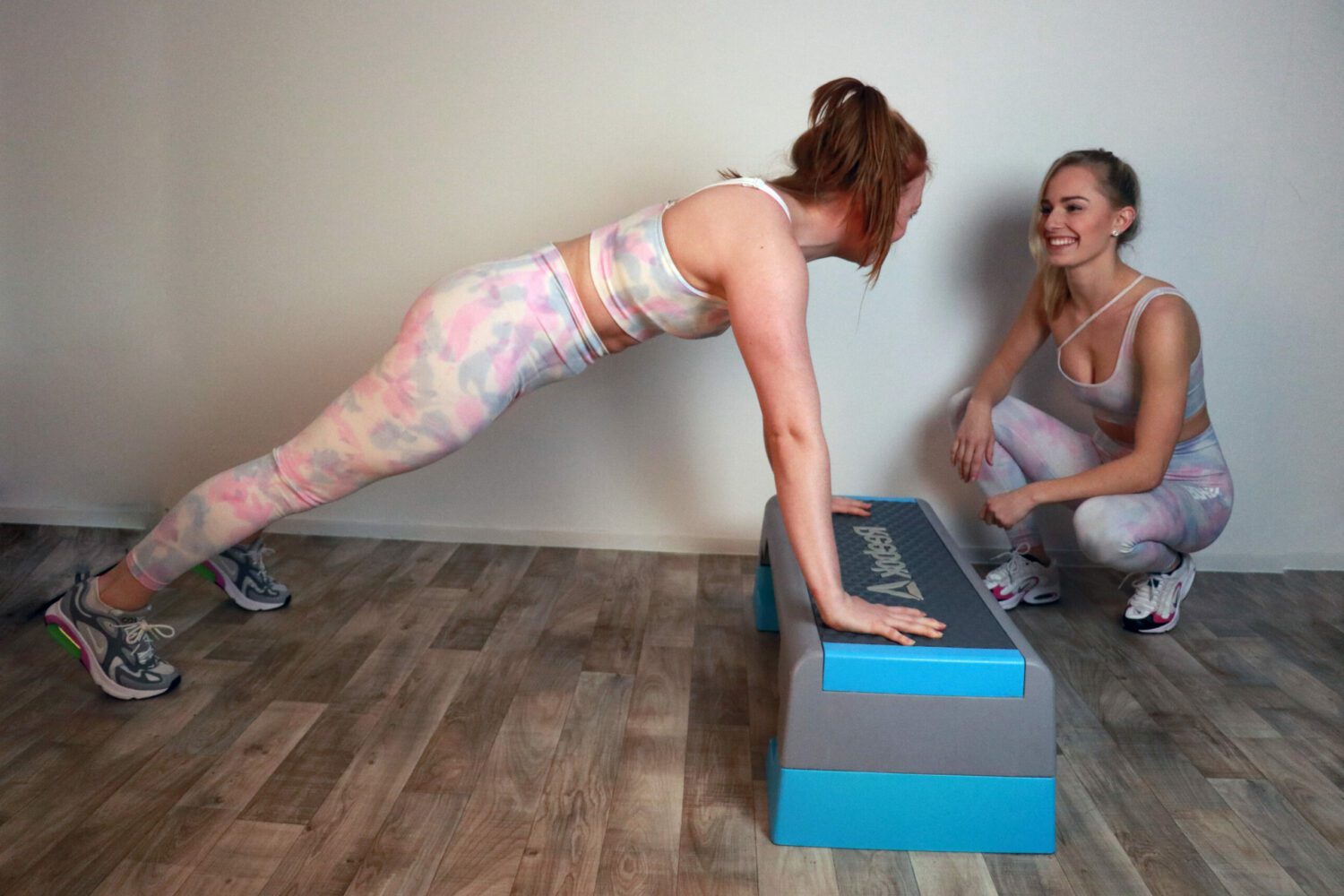



Functional fitness isn’t just the latest buzzword or fad in the fitness industry, it’s here to stay and likely to become more influential as time goes on.
If you or your clients are looking for workouts that have real-world impact, then functional movements are the way to go.
With so much choice and variety, you can create workouts that not only help improve functional movement but also achieve more traditional fitness goals, such as weight loss or strength development.
Functional fitness describes exercises and workouts that translate to everyday activities and life. In essence, these movements help to develop “practical” strength, endurance and fitness, making everyday tasks and activities easier.
From lifting the shopping bags out of the car, to walking the dog, functional fitness can have a profound impact on our lives, making these normal tasks feel that little bit easier.
As a form of exercise, it is less about arbitrary goals or aesthetic motivations, and more about creating tangible improvements to the way we move, that will help us maintain a high level of mobility.
Functional movements involve multiple muscles working together to move, push and pull. As well as improving strength and cardiovascular health, this approach also helps to develop key skills such as coordination, balance, flexibility and stability… areas that often go under the radar in lots of gym workouts.
These additional skills lay at the heart of healthy ageing and allow your body to better adjust to certain situations. From avoiding nasty falls in older age to getting out of a chair with ease, it is often things like the balance that can actually have a defining impact on our overall mobility as well age.
In some ways, the concept of functional movement almost sounds too simplistic and obviously, but the truth is, how many of us actually do balance, mobility and coordination exercises each week? Everyone seems to remember “chest” or “glute” day with no problems, but all of a sudden, that dedicated time to improve hip mobility or balance seems to be forgotten all too often.
Functional movements come in all shapes and forms and can be incorporated into both home workouts and gym sessions. You can use no equipment at all and focus mainly on bodyweight movements, or use traditional gym equipment like barbells, dumbbells and resistance bands. Similarly, equipment like sandbags and kettlebells tend to be very popular choices for functional fitness workouts as they naturally engage multiple muscle groups during movements and can encourage more natural pushing and pulling movements.

Whether you are looking to create a functional workout for yourself or for a client, here are some useful tips to help you make the most out of it.
#1 – Variety
There are so many functional exercises and movements, it presents a unique opportunity to create truly varied and diverse workouts.
For anyone that may start to lose motivation or interest when following a fitness plan, this ability to keep it fresh and exciting is a huge bonus.
#2 – Intensity
One of the benefits of functional workouts is that it’s easy to change up the intensity. You could easily create a HIIT (high-intensity interval training) workout that incorporates functional movements or create a low impact, low-intensity session that is focused more on slower, controlled movements, useful for seniors or those recovering from injury.
#3 – Replicating Sports Movements
If you or your clients play a particular sport, you can think about how to incorporate movements that will help improve specific skills and strengths associated with such movements.
For example, if you play basketball, you may find doing lots of throwing movements with a medicine ball helps to create useful strength that translates onto the court. This could have an immediate and significant impact on performance.
#4 – Full Body
The best functional movements engage the whole body. An exercise like a dumbbell power clean, for example, engages multiple muscle groups and helps to improve coordination, mobility and stability to keep the dumbbell positioned correctly.
Functional fitness isn’t just the latest buzzword or fad in the fitness industry, it’s here to stay and likely to become more influential as time goes on. If you or your clients are looking for workouts that have real-world impact, then functional movements are the way to go.
With so much choice and variety, you can create workouts that not only help improve functional movement but also achieve more traditional fitness goals, such as weight loss or strength development.
As with any type of exercise, correct form and technique are vital. Performing movements incorrectly can lead to injury. This is why personal training is so beneficial and offers people a safe and affordable way to improve their fitness by getting dedicated support from experts.
Want to become more involved in fitness, or looking to turn your passion for sport into a career? Check out our PT courses today.